Unknown Exhibition Building
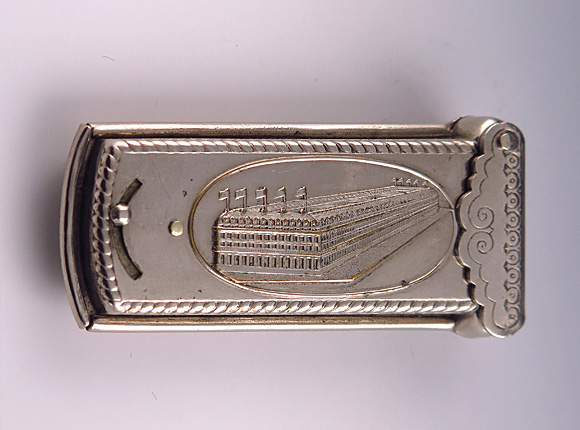
Needle Case
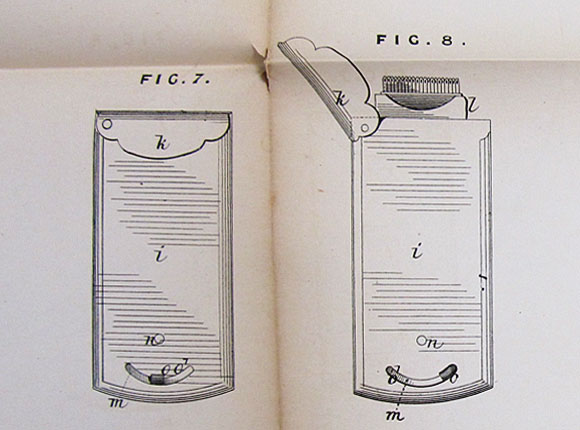
UK Patent 1868-3517 drawing
Design Details
Needle Case Type: |
Quadruple |
Patent/Registered to: |
William Avery, Redditch Needle Manufacturer and Albert Fenton of the same place, Machinist |
Patent/Design Representation #: |
Mechanical Patent: #3517 |
Patent/Design Registration Date: |
November 19, 1868 |
Location of Patent/Design Registration: |
British Library - Business and Intellectual Property Centre – London |
Reference #: |
1868-3517, Figures 7-10 |
Dimensions: |
3.3 x 7 |
Material: |
Nickel-plated |
Name Variations: |
W. Avery & Son - Redditch |
Other Variations: |
See other Quadruples |
US Patent |
US 1870-98904 |
Additional Photographs
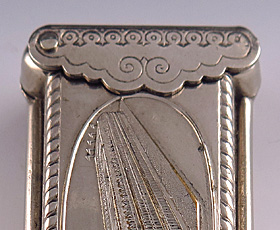
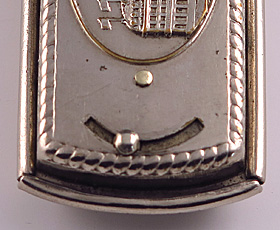
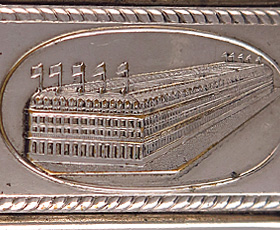
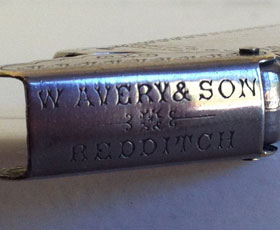
Detail views
The unknown building depicted on this needle case is most likely from an exhibition or World's Fair.
Facts
An exposition is a large-scale public exhibition showcasing arts, crafts, manufactured goods, industrial and agricultural products, scientific
achievements, etc. If it involves a sizable international group it is called a World’s Fair, world exposition or universal exposition.
Although the idea of a world’s fair originated in France, the Great Exhibition of 1851, held at the Crystal Palace in London, is considered the
first official World’s Fair.
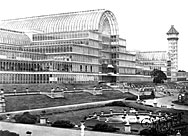
1851 Great Exhibition in London
History
Between 1851 and 1900 there were at least 19 World’s Fairs which were famous for their display of state-of-the-art science and technological
inventions and advancements. For instance at the 1876 Philadelphia fair the telephone and typewriter were introduced; the 1889 Paris fair
unveiled the Eiffel Tower and impressionist art as well as Buffalo Bill and Annie Oakley; and the 1893 Chicago fair produced the first Ferris
Wheel, chewing gum and spray paint.
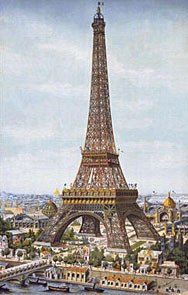
1889 Exposition Universelle in Paris
Miscellaneous
English needle and fish nook manufacturers from the Redditch area were also represented at these fairs and several won awards for the excellence
of their products. Abel Morrall displayed the stamping press and eyeing machines his company invented to improve the manufacture of needles at
the 1851 Great Exhibition and Queen Victoria herself examined these machines. Exhibition catalogues, reports and newspapers articles confirm
that a number of other needle companies had booths at these fairs including the large needle manufacturer H. Milward & Sons and the small firm
of W. Avery & Son. Milward was present at a minimum of five of these exhibitions around the world: 1873 Vienna, 1876 Philadelphia, 1878
Paris, 1880 Melbourne and 1889 Paris, and won a silver medal in Melbourne for the quality of their sewing needles W. Avery & Son had a
booth displaying both needles and needle cases in at least six of these fairs in Europe: 1873 Vienna, 1878 Paris, 1885 Antwerp, 1888 Brussels, 1889
Paris and 1900 Paris. Avery won an award at Antwerp, a gold medal in Brussels and a silver medal at Paris (1900).
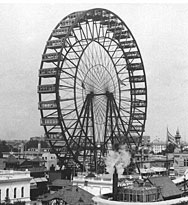
1893 World's Fair in Chicago













